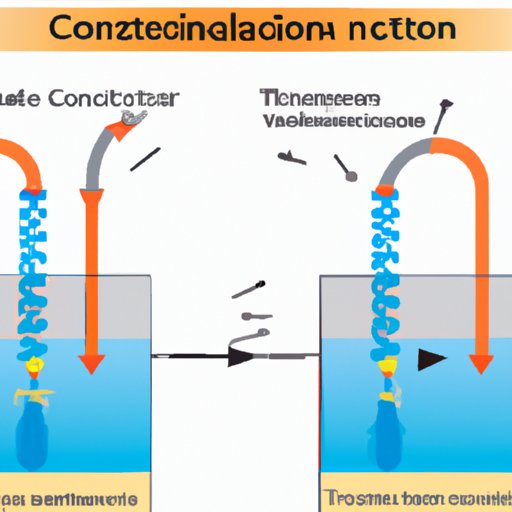Introduction
Conduction is an important concept in science, but what exactly does it mean? In this article, we will explore the definition of conduction and its applications in the sciences. We will also discuss common examples of conduction in everyday life.

Explaining Conduction in Science: A Comprehensive Guide
Let’s take a closer look at what conduction means in science and how it works.
Definition of Conduction
According to the American Heritage Dictionary of Science, conduction is “the transfer of energy from one part of a body or system to another by means of an intervening medium.” In other words, conduction is the process by which energy is transferred from one object to another through physical contact. This is why conduction is often referred to as “heat transfer.”
Heat Transfer Through Conduction
When two objects of different temperatures come into contact with each other, heat is transferred from the warmer object to the cooler object. This is known as thermal conduction. For example, when you place your hand on a hot stove, heat is transferred from the stove to your hand. The rate at which this heat transfer occurs depends on the materials that make up the objects and their respective temperatures.
How Does Conduction Work?
Now that we understand what conduction is, let’s take a look at how it works.
The Physics Behind Conduction
The physics behind conduction involves the transfer of energy between objects due to their temperature differences. Heat travels from the hotter object to the colder one until both objects reach the same temperature. This transfer of energy can occur through direct contact (such as when two objects are placed in direct contact with each other) or through an intermediary (such as air or water).
Role of Conduction in the Sciences
In the sciences, conduction is used to explain a wide range of phenomena, from the behavior of sound waves to the movement of electricity. It is also an important concept in thermodynamics, as it explains the transfer of energy between objects of different temperatures. By understanding how conduction works, scientists can better understand and predict the behavior of these phenomena.
Common Examples of Conduction in Everyday Life
We encounter conduction in our everyday lives without even realizing it. Let’s take a look at some of the most common examples.
Cooking
Cooking is a great example of conduction in action. When food is cooked in a pan on the stove, heat is transferred from the hot burner to the pan, and then to the food. This heat transfer allows us to cook food quickly and evenly.
Heating and Cooling Systems
Heating and cooling systems also rely on conduction to keep our homes warm in the winter and cool in the summer. Heat is transferred from the furnace to the air, which is then circulated throughout the home. Similarly, air conditioners use conduction to absorb heat from inside the home and release it outside.
Electricity
Electricity is another example of conduction in action. When an electrical current passes through a wire, it creates a magnetic field, which transfers energy from one point to another. This is how electricity is able to power appliances, lights, and other electronic devices.
Other Examples
Other everyday examples of conduction include boiling water on the stove, using a radiator to heat a room, and touching a hot pot on the stove. All of these involve the transfer of energy from one object to another through direct contact.
Conclusion
In conclusion, conduction is an important concept in science that helps us to understand and predict the behavior of a variety of phenomena. We encounter conduction in our everyday lives, from cooking to heating and cooling systems to electricity. Understanding how conduction works is key to understanding the world around us.
(Note: Is this article not meeting your expectations? Do you have knowledge or insights to share? Unlock new opportunities and expand your reach by joining our authors team. Click Registration to join us and share your expertise with our readers.)
